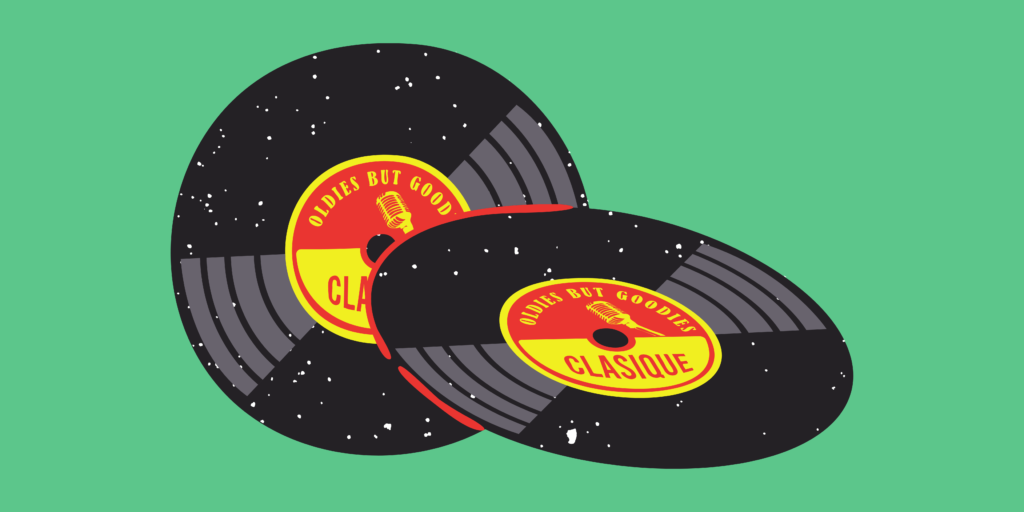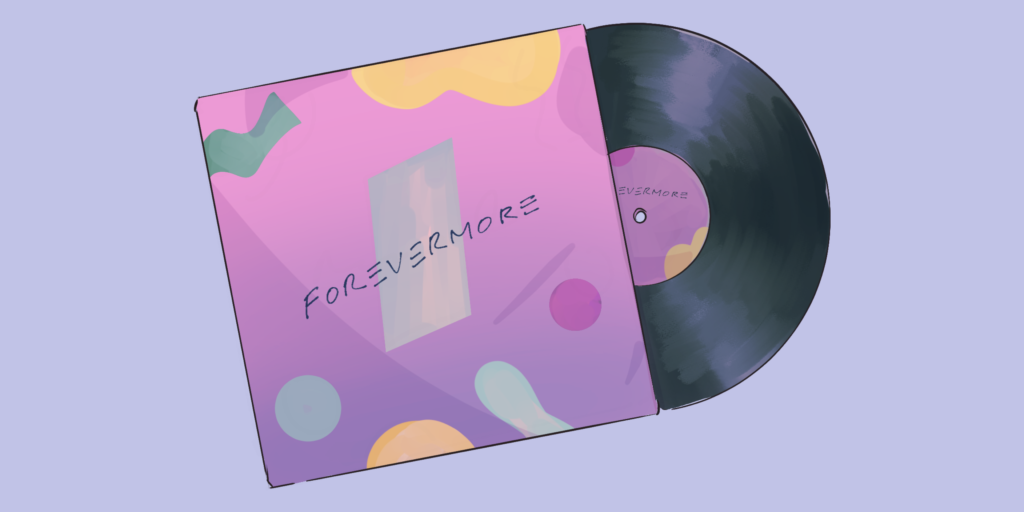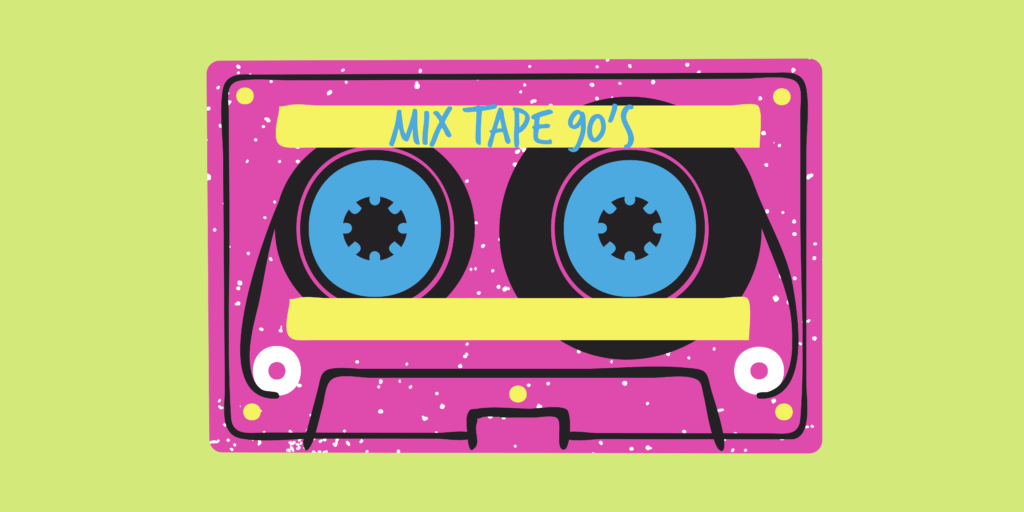Think about your favorite album. Who’s the artist? What’s your favorite song? These are probably questions you can answer without even thinking. Do you remember what life was like when it first came out? It’s probably an album you can listen to without skipping, so what makes the transition from song to song so enjoyable? Does the album art make you feel anything? These are questions we don’t often think about, but their answers are part of the reason why we love our favorite albums so much.
Youtuber Nathan Zed created a mini series where he has an honest and humorous discussion about the way we listen to music and how it has evolved in the digital streaming era. As someone with no musical background, but simply a lover of music, his aim for this series was to look deeper into the journey of creating an album and the parts of the process outside of the actual musical production. His series consists of four videos: The Lost Art of Album Sequencing, The Power of Album Covers, The Power of Nostalgic Music, and The Lost Art of Album Rollouts. After watching these videos, I started paying more attention to these elements of an album and thinking about the artist’s creative vision for creating the unique body of work. Now, everytime I listen to music it’s more than just what sounds good, it is an appreciation for the art, talent, and creative vision put into these bodies of work.
Each video changes your perspective on the music listening experience a little more based on which part of the process Zed takes a deep dive into. For each video, I will give a summary of some of the major points Zed brings up, example albums, and what I learned from the video that influences the way I listen to music to this day.
In his video, “The Lost Art of Album Sequencing” Nathan details the auditory journey of listening to an album from front to back. In his video, Zed argues that the major factors that affect the album listening experience are the sequential order and pacing of songs. According to Zed “Anyone can get people’s attention, but how well can they hold it?”. From beginning to end, a story is being told and each song is like a chapter that just keeps building on the one before it. Like any movie or novel, there is the inception, build up, climax, and conclusion. This isn’t necessarily a prerequisite for having a great album as the nature of some albums can be to defy structure or embrace an energy of chaos, but when done right, these factors can make a good album great. The pacing of the songs refers to the mood and energy from song to song. An example of off pacing would be a banger or fast paced high energy song followed by a slow melodic ballad. There are many ways to pace and sequence songs, but the idea is to have a natural connection from one song to the next through sound or theme. Zed compares the pacing of an album to that of a movie and how a movie with pacing that’s off gets confusing, loses its rhythm, and just feels off. The pace and sequence can enhance the listening experience and play a role in telling the story the artist is trying to express in their album.

Some example albums with excellent pacing and sequencing Nathan Zed references are:
- Ctrl by SZA
- To Pimp a Butterfly by Kendrick Lamar
- Blonde by Frank Ocean
- Off The Wall by Michael Jackson
- Dangerously in Love by Beyonce
- Currents by Tame Impala
- My Beautiful Dark Twisted Fantasy by Kanye West
After watching this video, I listen to albums differently, noticing the way each song makes me feel from start to finish. I wonder, is the first song drawing me in? What kind of tone is it setting for the album? If the first song is the best song on the album, I’ll probably get disappointed and feel like the rest of the album isn’t even worth listening to. The intro song should be something that hooks me in and makes me not want to let go. And now that I’m hooked, the rest of the story should unfold. The songs should start to build on one another thematically and auditorily. And then there should be a point where I reach the climax of the album. This can be the best song of the album, one that really encompasses the album’s theme, or just changes the dynamic for the rest of the album. By the last song of the album, I should have been able to come down from the high of the climax song and be let down smoothly. The last song should tie the album altogether and leave me something to think about so that it leaves a lasting impression on me as a listener.
In his video “The Power of Album Covers”, Zed explains how influential album covers can be to the music listening experience. The music should be able to stand on its own, but great album art can elevate the audio visual journey by providing a visual representation of the world the artist created for the album. In a way, a good cover art can make the music better and the music can make the cover art better in a mutually beneficial relationship. The power of album art extends to an artist’s career in that good album art can be so powerful that it becomes a part of who you are and will forever be associated with you. According to Zed, some of the factors that can make an album cover good are their ability to feel like a doorway into the world of the album, be so iconic that they transcend the music or genre, or if you’ve seen the cover even if you’ve never heard the music. An important factor in album art is the color scheme used. There are certain feelings associated with certain colors which can be transmitted in the color scheme of an album. An example he uses is the trend in hip hop music in 2015 where a lot of the album covers used blacks, whites, and greys which had a dark and moody feeling for both the art work and subsequently the subject matter of the songs but towards the summer of 2016 there was a shift to more colorful and vibrant album artwork and upbeat high energy music. When it comes to including an artist’s own image on the cover there is still a lot of creative freedom that an artist can have. It is exciting to see an artist in a unique and interesting way on their album cover whether it be through interesting colors, cool makeup, a unique pose, a unique outfit, or some interesting graphic design. Great album artwork can look a variety of ways whether it be minimal, maximal, captivating or any other adjective, but the biggest thing is for album art to make you feel something and be a good visual representation for the album.

Some example albums with iconic and/or powerful album art Nathan Zed references are:
- The Miseducation of Lauryn Hill by Lauryn Hill
- Abbey Road by The Beatles
- Because the Internet by Childish Gambino
- To Pimp a Butterfly by kendrick Lamar
- Kid A by Radiohead
- 8701 by Usher
- 2014 Forest Hills Drive by J. Cole
- The Dark Side of the Moon by Pink Floyd
After watching this video, I do have a greater appreciation for album art and now judge new albums that are released. Artists have a lot of creative freedom for album art and in a way have more creative freedom than other mediums like book jackets, movie posters, or video game covers, so I would like to see artists take advantage of that. Good album art isn’t the end all be all to a great album, but it definitely enhances my appreciation and enjoyment of said album. I think about recent albums like Travis Scott’s Astroworld or Tyler the Creator’s Flower Boy and how their album art was so iconic when they first came out, are an accurate visual portrayal of the album’s sounds and themes, and are just so aesthetically pleasing to look at I could decorate my room with their album covers.
The pandemic has without a doubt illuminated the power of nostalgic music. We all yearn for simpler times and memories of the past filled with happiness, friends, school, or even pain. Music is kind of like a time machine in that you can listen to a song and instantly be transported to a different time. Zed argues that “Music is only as good as the memories we have attached to it” because “The music can be good on its own, but the memories attached to it can make the music 100 times better”. Interestingly this can still be true even when we don’t have memories to associate. When listening to music that came out before you were born you can still feel nostalgic for a time you weren’t even alive to experience. Music can be nostalgic because we can associate it with memories, people, and even locations. The down side to the power nostalgic music can have is that it can make us feel stuck in the past and it can be harder to create new experiences with new music thus limiting the evolution of artist creativity and our own personal lives. Nostalgic music is different for everyone because everyone has different tastes and memories, but what’s important is to have a healthy balance between reflecting on the past and trying to live in.

Personally, I’m no stranger to the power of nostalgic music. I’ve listened to music that reminded me of simpler times or fond memories of the past, but I recognize the danger it has too. My relationship with nostalgia is best represented in Dolly Parton’s song “In the Good Old Days (When Times Were Bad)” because she can recall memories of her childhood with fondness, yet recognize they were so painful that she would not try to relive them. I think music can be nostalgic in two ways because it can be a reflection of a point in both chronological time and personal history. For example, Drake’s album, Nothing Was the Same, reminds me of middle school because that album came out during a year when I was in middle school. On the other hand, I didn’t listen to The Weeknd’s album After Hours until a year after it came out because it wasn’t until then that I was going through a breakup and some of the themes of the album resonated with my situation. The music made me feel nostalgic not because of the point in time it came out, but because I was at a point in my life where I felt the strongest connection to the album. It’s natural to want to look back on the past and reflect on some of your happy or sad moments through music, but it’s also important to not let that make you live in the past. The future is bright and there are still so many memories you have to make and people to meet.
In the most recent installment of his series, “The Lost Art of Album Rollouts”, Zed reviews the part of the music process where an artist introduces their new album. Sometimes we see this when an artist themselves changes their look, but in general, it feels like a new era in the artist’s journey. Zed argues that some of the best album rollouts feel like an event. This is especially true for concept albums which have a collective theme or purpose beyond each individual song. Some of music’s greatest albums have a feeling in which a new world was created and the artist themselves might even play a character in that world and little by little, an artist introduces that world until the album is finally released.
There many strategies artists use to carry out the album roll out and throughout music history these included releasing singles, releasing music videos, and doing interviews that lead up to an album drop, or even surprise album drops. In the digital age where there are so many things happening simultaneously and our attention spans are short it is imperative that an artist capture our attention to introduce an album. In recent years artists have utilized art installations, memes, pop-up events, and live performances to introduce their album and are a great way for artists to build connections with their fans and use other mediums to help tell the story of their album. One way artists can also enhance the album rollout is when the album has a theme or the artists created a new world for that album and then they embody it by dressing up as a character from that album for events they attend or when their music videos also revolve around a central theme and feel connected. Good marketing like this can build up excitement for a new album and a new era for both the artist and the listener. Zed notes that “The music lasts longer than the rollout. The music is what’s going to be remembered, but the rollout is an opportunity to create a moment.”
Examples of well-executed album rollouts Nathan Zed references are:
- After Hours by The Weeknd
- Because the Internet by Childish Gambino
- Igor by Tyler the creator
- Dirty Computer by Janelle Monae
- Astroworld by Travis Scott
- 2014 Forest Hills Drive by J. Cole
- My Beautiful Dark Twisted Fantasy by Kanye West
I’ll admit, I’ve never really paid much attention to album rollouts before. To me, it was never worth the hype or emotional investment because I never wanted it to alter the way I enjoyed the music itself. I will genuinely listen to an album for the first time at least 3 months after it came out because I need the hype to die down in order to form my own opinions and connections to the music without being influenced by everyone’s opinions online. This method works for me, but Zed presented some really unique album rollout examples in recent history and I feel like I missed out on the moment created by its introduction to the world. Moving forward, I do want to pay more attention to the rollout of new albums. It takes a lot of effort and creativity to build the world of a new album and I want to be a part of that experience. I want to get excited about the new world the artist is creating and appreciate all the effort they do to bring that vision to life.
I appreciate Nathan Zed for creating this series as a fun way to look at what goes into making an album besides the music itself because it has changed my entire relationship with music. I now have a greater appreciation for the artistic insight it takes to envision an album, create the music for it, tell a story through the songs, and take the vision one step further with album art and an album rollout. Moving forward, I no longer see music as just a connection to my life, but with an appreciation for the creative endeavor each artist undertakes.
Design courtesy of Kara Fields
